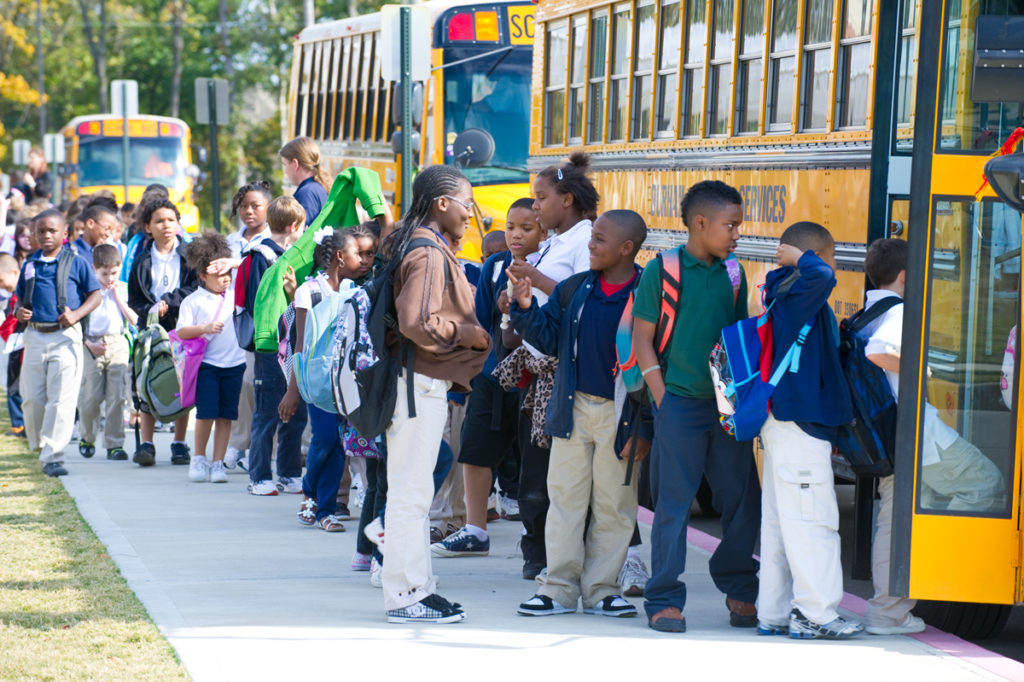

After the well-publicized event last summer where a bus monitor was mercilessly bullied by students on her bus, the news has been full of ideas for how to make children’s bus rides safer. I’ve read about improving training for bus monitors and beefing up the support that they get from school administration. I’ve read about a bus monitor who leads songs, chants and even reads aloud. These ideas all have potential, but many school buses don’t have a monitor who can engage the children in such activities. Furthermore, it’s neither fair nor realistic to leave all bus safety in the hands of the bus monitor. We educators at school should also play a part. We can teach the children who ride the bus ways to keep their rides safe and friendly. We can teach them songs and hand games that they can play to keep themselves positively engaged. We can teach them how to play a positive role when they see mean behaviors.
I’ve written before about the Peaceful School Bus, an approach that uses school time to build community among the children who ride to school together, and about a homegrown approach along the same lines developed at Grafton Elementary in Massachusetts. Recently I spent a day at Garfield Elementary School in Springfield, Virginia, where I learned about a variation on this bus community-building approach they are trying this year.
Garfield sets aside a few periods each month for community building activities. This year they plan to use a couple of these blocks for their “school bus flocks.” Each “flock” will include ten or so students, of a variety of ages, all from the same bus, and an adult mentor—an educator from the school. Everyone, even walkers, will be in a flock, because the staff at Garfield understand that mean behaviors happen during the walk to school as well as on the school bus. During their time together, the “flock” will engage in getting-to-know-you activities to encourage cross-age bonding, laying the groundwork for making the bus a safer place for all. Think about the possibilities! The bus flocks could learn songs and hand games so that they’ll have something positive to do on the bus. They could brainstorm conversation topics and practice having partner chats together so that they’ll have something to talk about as they travel to and from school.
One goal of the Garfield “flocks” is to encourage older children to watch out for and protect younger children, a wise strategy since we know from research that children tend to bully younger students.
Garfield’s motto is, “Garfield School, flying in V formation, where children get what they need to succeed.” Their “bus flocks” are surely part of this V formation.
What is your school trying in order to make the bus a safe place for all?
How to Bullyproof Your Classroom offers a practical, proactive approach to bullying prevention. Learn how to create a positive classroom environment and how to respond to mean behavior before it escalates into bullying.
“Teacher-friendly from start to finish!” —Martha Hanley, Grafton, MA
Caltha Crowe is a Responsive Classroom consulting teacher with nearly forty years of experience teaching elementary school students and twenty years of experience mentoring new teachers. She is the author of three books: Sammy and His Behavior Problems (NEFC 2010), Solving Thorny Behavior Problems (NEFC 2009), and How to Bullyproof Your Classroom.